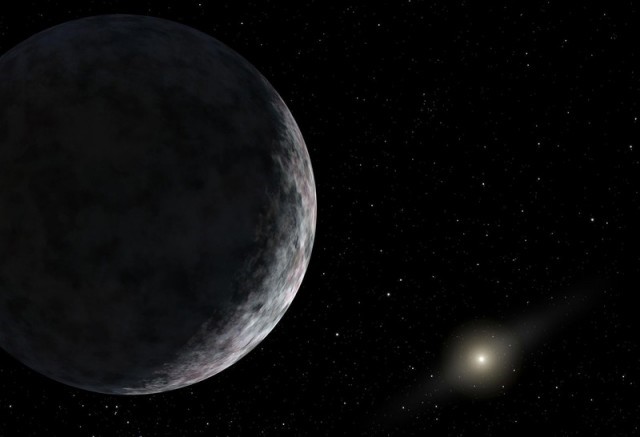
Everyday a new exoplanet is seemingly discovered in some far off, unreachable galaxy – so, it shouldn’t be surprising when two more exoplanets are discovered. Unless, of course, they’re in our own backyard. New research has amassed evidence to support the existence of two large exoplanets residing far beyond Pluto’s orbit. The evidence is supported by the orbital observations of objects residing past Neptune’s orbit. These objects – called extreme trans-Neptunian objects (ETNO) – exhibit a shared pattern in their orbit, suggesting that they’re being gravitationally influenced by some heavier objects even further away.
It’s worth noting that while this hypothesis is based on a small sample 13 objects, the authors confirm that the statistical significance of their results is likely supported by the presence of two exoplanets. Interestingly enough, the presence of the closer of the two planets had already been suggested in a previous study. The new evidence only further compounds this theory.
“This excess of objects with unexpected orbital parameters makes us believe that some invisible forces are altering the distribution of the orbital elements of the EETNOs, and we consider that the most probable explanation is that other unknown planets exist beyond Neptune and Pluto,” said lead author Carlos de la Fuente Marcos, of the Complutense University of Madrid.
To put the distance of the two exoplanets into perspective, consider that it takes sunlight a full eight minutes to reach Earth. Earth is located one au away from the Sun, whereas, Jupiter is approximately five aus from the Sun ( au = an astronomical unit of length roughly the distance between Earth and the Sun), and Neptune is 30 au away, while Pluto, which is barely in contact with the Sun’s light, is 39 au away. Bearing this in mind, consider that the closer of the two exoplanets is 200 au, while the other has a semi-major axis of approximately 250 au. At such gigantic distances away from the Sun, it’s no wonder that two planets have just recently been detected.
Similarly, It’s believed that two worlds are large enough to dubbed “super-Earths,” with the furthest of the two potentially having 10 times the mass of Earth.
Nonetheless, the authors do point out there the study has run into some problems. First, the presence of super-Earths far beyond Pluto’s orbit conflict with the current models of stellar formation. Fortunately, this challenge may have been addressed by the ALMA telescope’s recent observation of the star system HL Tauri, which revealed a stellar system in the process of forming, even as several of its planets sat several hundred au away from the nascent star.
Second, the authors’ small sample is too small; they hope to counter this by obtaining additional samples in the coming months.
If these study proves completely accurate, then there’s a probability that other planets of this caliber may also reside exist in our solar system.
Source: Ars Technica
Advertisement
Learn more about Electronic Products Magazine





